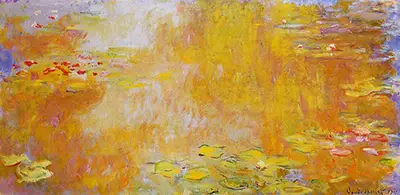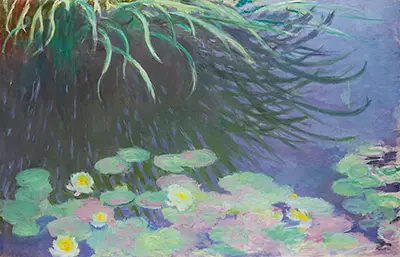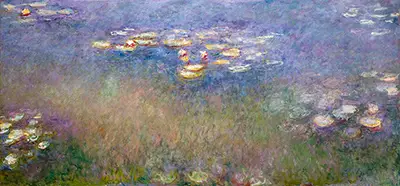Perhaps there is no work of art more distinctive or enchanting than the Water Lilies series, or Les Nymphéas, painted by the French Impressionist painter, Claude Monet. Recognisable at a glance, Monet's Water Lilies capture the complex beauty, fragility, and radiance found in nature. At his home in the French village of Giverny, Claude Monet took his easel outside to the lush ponds surrounding his cosy little house and set to capturing the plant life of his property on the canvas. The result was Water Lilies, a series of approximately 250 individual paintings which were created during the last 30 years of Monet's life.
In viewing Water Lilies in its entirety, one can see the progress and subtle changes that take place not only in the natural world, but within the artist as well. This makes Monet's Water Lilies unique in the way that it portrays not only the passage of time and ageing process but also the impermanence of light and the artist himself.
One day, while riding on train through the quaint French village of Giverny, about 50 miles west of Paris, Claude Monet was instantly struck by the beauty of the place, and in 1883, decided to rent a house there. He and his family moved into the house and promptly got to work filling the gardens with ornamental flowers and tall fruit trees. After several years at the property, he decided to beautify and expand on his two acres of land.
Monet aimed to divert the River Epte, thus creating a water garden for his land. This area he adorned with water lilies imported from South America and Egypt. His motivation for this project, aside from his fondness for horticulture, was 'for the pleasure of the eye and also for motifs to paint'. Unfortunately, the local council and Monet's neighbours all objected to this landscaping project, fearing that these exotic plants would poison the area's water supply. They demanded that these plants be uprooted and removed at once, but thankfully, Monet dismissed their fears and ignored their demands, leaving the lilies in place, where they remain to this day.
It's incredible to think that the Water Lilies series might not ever have been created at all had the local town council had their way. In spite of the continuing protests of his neighbours, Monet completed his water gardens and a small pond, and in 1899, constructed a Japanese-style bridge to go across it. So satisfied was he with the finished work, this bridge was the subject of 17 different painting that very same year. Each painting portrays the bridge in different lighting, immersed in a variety of different weather patterns. Each one capturing the structure in a specific moment in time. The element to his career that we remember most of us was probably the way in which he studied the same objects many times over, but within different environmental conditions across each iteration.
Claude Monet began painting his Water Lilies series in 1897. As the storm of WWI raged around him in Europe, Monet sat near his water gardens, painting his aquatic plants in various states of bloom, his Japanese-style bridge, and the long hanging willow branches, reaching for the pond waters below. These paintings, which Monet referred to as his 'water landscapes' became the focus of his entire life, spending much of his last 30 years alive working diligently on them, not even slowing down when his eyesight began to weaken due to the onset of cataracts in 1912. By the year 1920, Monet was widowed twice, and his paintings were the subject of much scrutiny by the art critics, who claimed that his Impressionist works were not the result of his artistic vision, but his blurred and fading vision.
It was not only the scornful voices of his critics that brought darkness into the life of Claude Monet. Aside from the loneliness of being a widower, Monet longed for the company of his friends and fellow artists, such as Cézanne and Renoir, who had already passed on. Monet himself, being of an advanced age, was believed by many to have died as well. Feeling alone, criticized, and forgotten, Monet's self confidence was shattered. Many of the younger artists and critics were now enamoured with the more current avant-garde art scene, finding the works of the Impressionists to be passé while artists such as Picasso were more exciting and of the moment. During this time, Claude Monet became a perfectionist, holding himself and his work to nearly impossible standards. Sadly, this emotional turmoil lead to the destruction of several finished paintings that no one aside from the artist has ever laid eyes upon. In 1908, just before several of his Water Lilies were to be exhibited at the Durand-Ruel gallery in Paris, Monet destroyed each one out of frustration that they had not achieved what he intended.
For the paintings themselves, Monet aspired to create a series of paintings that would be laid out side by side, creating what the artist described as 'the illusion of an endless whole, of water without horizon or bank'. While earlier paintings in this series encompass a larger scenery with the trees, pond, bridge and various plants on the horizon, Monet began to move the focus closer and closer to the surface of the water. Eventually, the horizon, the banks of the pond vanished altogether until the viewer is surrounded by the pond, the trees overhead only appearing in the reflection of the water's shimmering surface, scattered with lily pads. All of the typical markers of an Impressionist landscape painting were removed. With all of these panels mounted next to one another, this would create was Monet referred to as, 'the refuge of a peaceful meditation in the centre of a flowering aquarium'.
The Water Lilies paintings also serve as a sort of diary of Claude Monet's life during that time as well. With the changes taking place in his eyesight due to his weakening vision, so too do the colours and hues change within the paintings. Just as the viewer can study Monet's Water Lilies and feel immersed in Monet's gardens, they can also easily imagine seeing through the eyes of the artist himself, as the light from a younger man's eyes begin to dim and grow old. With the creation of Les Nymphéas, Claude Monet completely broke the mould of Impressionism and turned it on its head. The old standards of the movement did not apply, as he was creating something new. Up until this point, Impressionist works were a bit more cut and dry for the viewer. Here is a field, a meadow, or a lake, and the viewer is gazing out upon the scene from a fixed point. But, Monet's aim was to create a more immersive experience, to transport the viewer from wherever they may be and place them directly into a specific moment in his water gardens in Giverny.
Entire Series of Water Lilies (Nympheas) Paintings and Drawings from 1892 to 1926
With no fixed point of land or horizon, the viewer can almost become lost in the light and colours of Monet's pond. Taking this breaking of boundaries even further, he broke with convention again when he expanded his Water Lilies well beyond the easel, creating vast, expansive paintings. A single painting can easily take up an entire wall. This style of 'all over' painting almost seemed to create a work that resembled something more abstract. In fact, Monet's unique artistic vision would go on to inspire countless abstract painters in the future. Among them, the American abstract stream of consciousness painter Jackson Pollock. Claude Monet painted as WWI wreaked havoc throughout Europe around him. At the end of the war, the day after the armistice of November 11, 1918, Monet graciously donated several of his paintings as a gift to the people of France. Offering a 'monument to peace', he gave some of his enormous paintings to the people of his homeland. The works were installed in the Musée de l'Orangerie in Paris, where two specially made, oval-shaped rooms were constructed to display these vast, curved paintings. The sensation of standing in those rooms is like no other viewing experience, immersing the viewer in a panorama of colour and light.
To this day, the massive Water Lilies paintings are still on display in the Musée de L'Orangerie in Paris, next to the Luxembourg Gardens. Each day, they are viewed by hundreds of visitors who view them just as Claude Monet intended them to be, as an immersive, meditative experience. Claude Monet's home in Giverny also receives its fair share of guests every day. Visitors can walk through the house where Monet lived and imagine what it might have been like to live a day in the life of the artist. After having a stroll through the house, they can walk outside, through the pretty flower gardens and willow trees, to the water gardens, across the bridge, and gaze down at the ponds, scattered with water lilies. Much like Van Gogh's sunflowers, or the dancers of Degas, the images of Water Lilies will forever be synonymous with the works of Claude Monet. The creation of the series did not come easy. Several years of work went into Water Lilies, along with a great deal of emotional ups and downs, problems with neighbours and local bureaucracy, and an awful lot of time spent gardening and landscaping. In the end, we are all the richer for it, as the result was a new form of art, leaving countless artists and admirers forever changed and inspired.
Waterlilies prints from original Claude Monet paintings can be found here in this website which also offers lots of information on this famous series of impressionist paintings. Those who are interested in other paintings from the career of Claude Monet can find a comprehensive list of Claude Monet prints here. Al the links included below take you to our recommended retailer for Claude Monet art, which is Art.com, who we regularly use ourselves. They specialise in framed and unframed art prints, giclee prints, posters and stretched canvases for a full list of Monet's career paintings. Water Lilies, or Nympheas, is a topic of painting that has become possibly the best known from all of Monet's career, even ahead of his Haystacks series, portraits of Madame Monet and his series of cityscapes around London.
The qualities of this series was the natural beauty of the topic in combination with Claude Monet's skills in lighting and detail and also the variety in positions for each work across the series. Few realise that the artist actually went as far as producing 250 different paintings on this topic with sketches and study pieces also very common as he sought new angles all the time on an existing idea. The sheer number of paintings from this series mean that anyone can find one that suits exactly their taste and requirements whilst they are also spread all around the world, offering most of the world the opportunity to atleast see a few from the series. The best collections remain in America, UK and Monet's native France.
The international reputation on the artist and this series means that the paintings rarely come up for sale, but most recently Le bassin aux nympheas sold for over £40 million at Christie's in London back in 2007. This remains a record for any work from this series up to the present day, though other major sales have also been made since at Sotheby's auctions, also in London. Those looking to see some of the original paintings in all their glory will be pleased to discover that many are held in collections of major art galleries rather than privately, and as such as regularly displayed. Reflections of Clouds on the Water-Lily Pond is perhaps the finest in display currently, measuring an impressive 200cm × 1,276 cm. It can be found at the Museum of Modern Art, New York City.
Claude Monet was one of the very first artists to display series of paintings on the same topic together to underline different findings that he would make during his work, most commonly that of light and time and their influence on art. Monet was an artist who brought a new way of thinking, but he was not without influences himself. Eugène Boudin, Johan Jongkind and Gustave Courbet are generally accepted as being three artists who had the most impact on his development and ideas at an early age. The colours and style of the impressionists represents a very important stage in the development of western art and Claude Monet continues to be regarded as the Godfather of the whole movement, as well as one of the finest contributors to it. His most celebrated achievements include the Waterlilies series as well as Haystacks, Impression, Sunrise, Rouen Cathedral series, London Parliament series and Poplars.
The London Parliament series was part of a larger output during Monet's spell in London, UK whose architecture interested him with several key buildings placed over the River Thames. Monet was able to produce such a large number of paintings of lily ponds because he created his own garden specifically for the purpose in Giverny, France. This carefully designed garden featured plenty of great subjects for Monet to feature in his paintings and the easy accessiblity of a back garden enabled the artist to cover each topic from different angles and at different times. The Waterlilies series, with all it's different colours and lighting make it an excellent selection of paintings that are ideal for those looking to buy art for their own homes. The purples, blues and greens make his original paintings ideal as art print reproductions, stretched canvases, handmade oil paintings, giclee prints and posters.
Besides those featured as images within this homepage, other famous paintings from the Monet Waterlilies series of paintings include Water Lilies, 1920-1926, Water-Lily Pond, c.1915-1926, Sea-Roses (Yellow Nirwana), 1920, Water Lilies, 1919, Water Lilies, 1917-1919, Water-Lily Pond and Weeping Willow, (1916-19), Nymphéas reflets de saule (1916-19), Nympheas, 1916, Water Lilies, 1916, White and yellow Water Lilies, (1915 -1917), Nympheas, 1915, Water-Lilies, 1914-1917, Nympheas, 1915, Water Lilies, 1908, Water-Lilies, 1908, Water Lily Pond, 1908, Water Lilies, 1907 and Water Lilies, 1906. This concludes the series of Monet prints on Waterlilies on this homepage, please use the links above to his gallery if you wish to see even more of the wide selection available covering the entire series which can be found at Art.com who also offer all his other major paintings, plus many other impressionist painters.
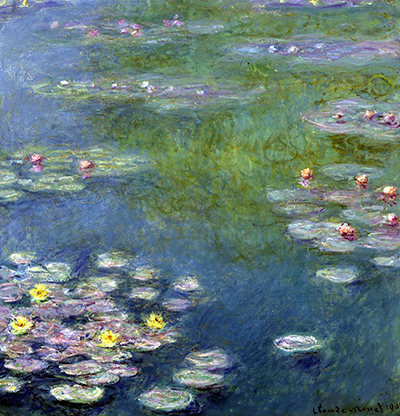
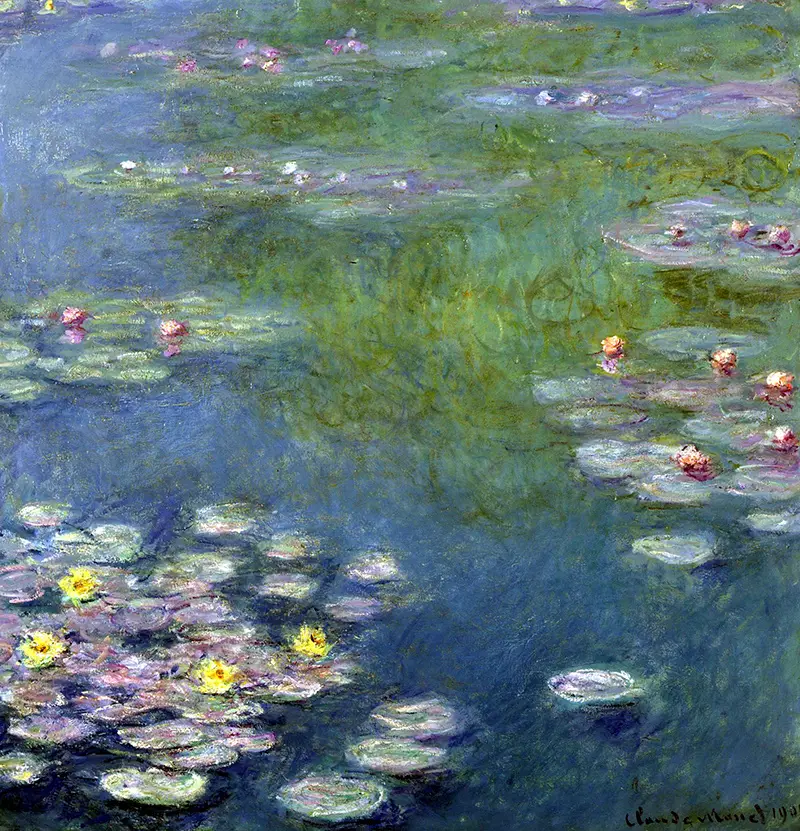
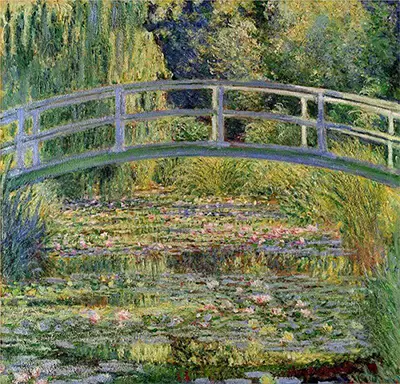
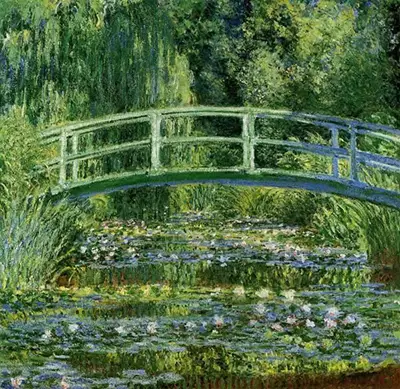
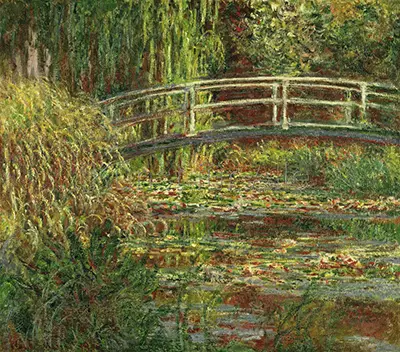
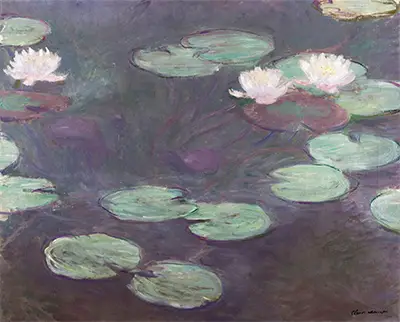
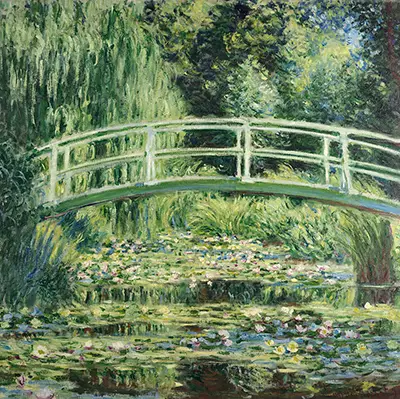
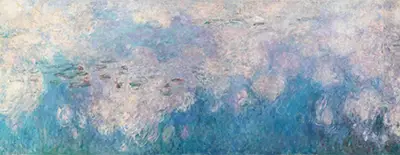
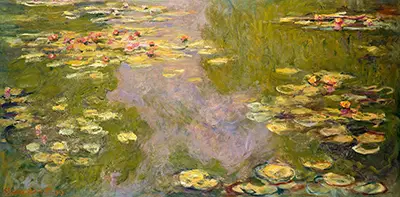


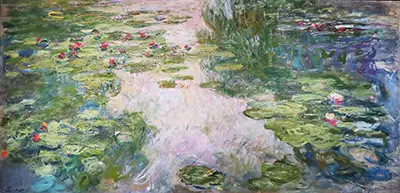
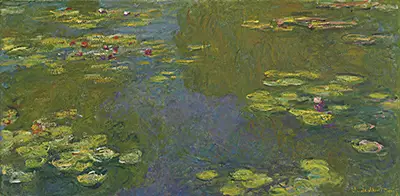
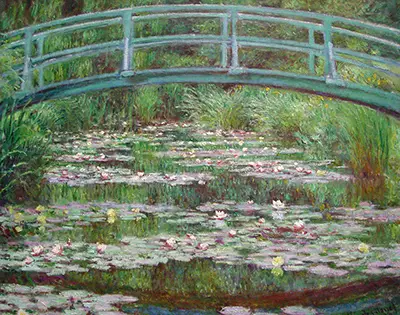
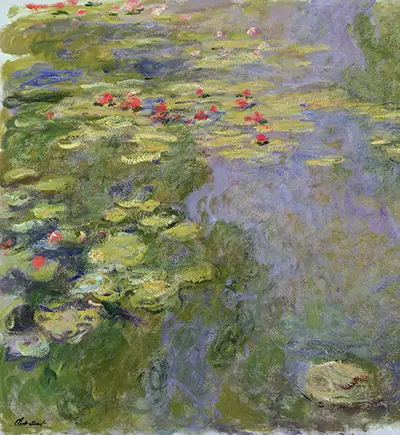
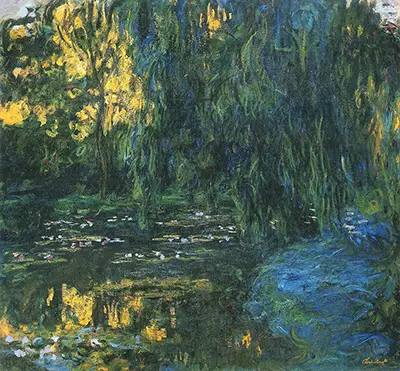
 Claude Monet.jpg)
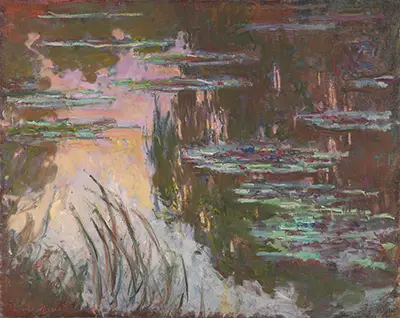
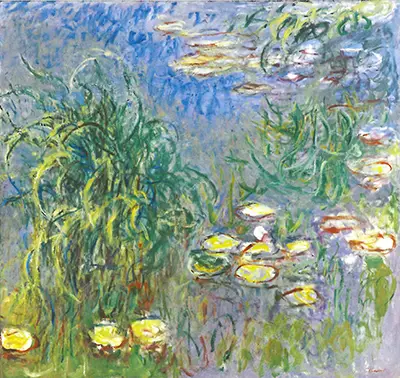
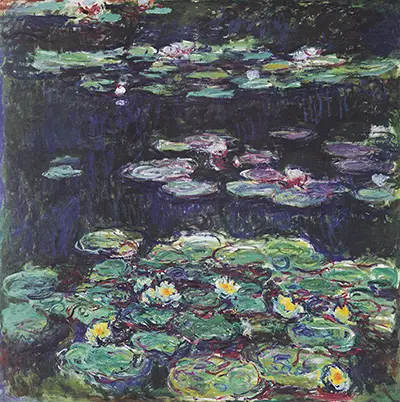
 Claude Monet.jpg)
